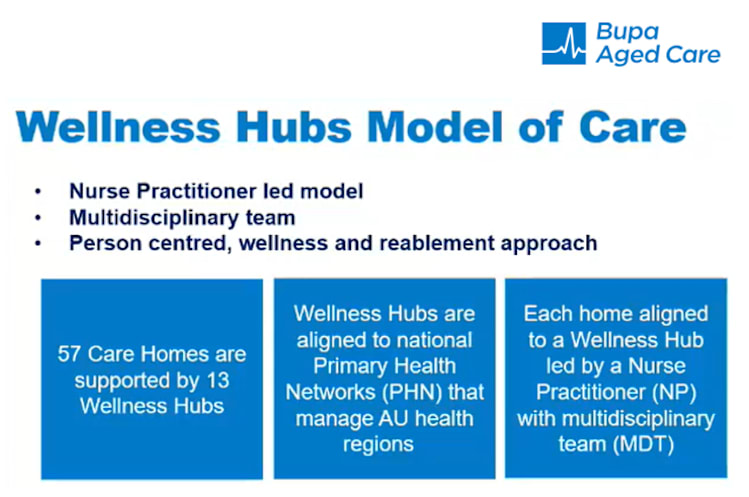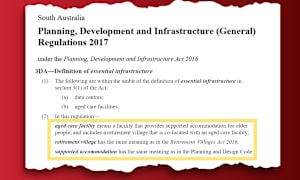Bupa Villages and Aged Care says its virtual care Wellness Hubs are driving better clinical outcomes, quicker response times and new career pathways for staff – but warns the model is unsustainable under current Government policy.
Speaking at the recent IHACPA Conference 2025, Bupa's Head of Health Services, Jonathan Brinton (pictured right), outlined the results of the nurse practitioner-led Wellness Hub program, which was developed in 2023 in partnership with the Federal Government's Aged Care Research and Industry Innovation Australia (ARIIA).
After a successful 12-month trial, Bupa rolled out the Wellness Hubs across all 57 of its homes last year. Each home, including those in regional areas, is now supported by one of 13 Wellness Hubs.
What is the Wellness Hub?

Under the model, nurse practitioners, highly trained registered nurses who have authority to prescribe medications and orders diagnostic tests, clinically review residents using virtual tools and develop treatment plans. The nurse practitioners then work with a team of allied health and clinical professionals, including wound consultants, dietitians, and allied health services, to implement the plans.
Wellness Hub clinicians run regular virtual discussions with each home about residents who have been referred, and they see residents at key points in their care journey, such as on admission and when they return from hospital.
A Care Manager supports each resident through their assessment with the nurse practitioner, using technology such as a VisionFlex, which provides a high-definition examination camera to assess their health needs or concerns. Each resident has their own digital health dashboard to manage subsequent telehealth appointments and monitor outcomes.
Hubs improving care

Bupa Quality Director Mel White (right) told The Weekly SOURCE that the Wellness Hubs have improved care outcomes, including:
- a 10% reduction in falls
- an 8% reduction in unplanned weight loss
- faster wound healing time, and
- reduced wait times across the broader health system, especially in regional Australia.
With the Wellness Hubs, 87% of residents are seen within three days (see graphic below), as opposed to being left waiting weeks for services at times previously, particularly in rural areas where services are scarce.
In the December 2024 quarter, there were 7,461 resident referrals to the Wellness Hubs, an 8.7% increase on the previous quarter.

Care minutes are hampering innovation
However, the model is currently unsustainable as the Wellness Hubs do not contribute to the Government's mandatory care minute targets.
"At the moment we can't sustainably cover the cost of models of care like this because a lot of what I've spoken about today doesn't meet care minutes," Jonathan told the conference. "To unlock innovation, providers like us need more flexibility in the way we are allowed to deliver care and how we are funded and how we are regulated. Care minutes alone are a measure of quantity and not necessarily quality."
Despite the challenge, Mel said the Wellness Hubs are a longer-term investment, and Bupa is looking to expand the services they offer.
"Care Minutes is just one of many standards aged care providers are measured on," she said. "We work hard to take a holistic view of meeting our residents’ care and lifestyle needs, in addition to meeting our regulatory requirements."
Bupa said it had reviewed staffing across every home and reworked rosters to boost support during peak periods. The operator is also looking to expand the Hubs' allied health services, including the addition of psychology, and is funding scholarships to help Registered Nurses qualify as Nurse Practitioners.











